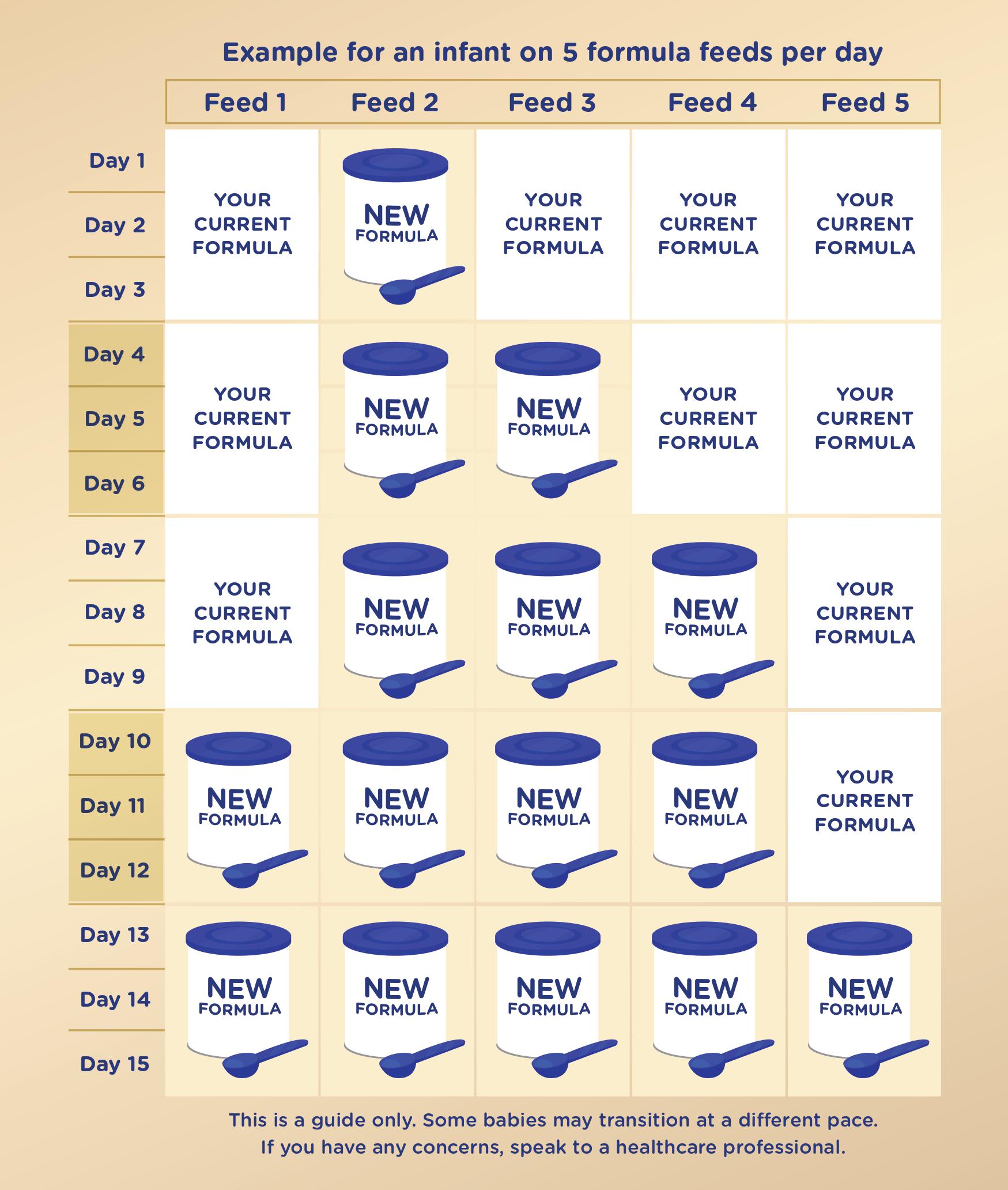Formula Feeding Transitioning Guide
Formula feeding infants may need to transition to a new formulation from time to time. Often, it is done to better suit particular feeding requirements; however, it may also be necessary because of a recipe update on their usual formula.
Every baby is unique, and most babies may likely adjust well to transitioning to a new formulation. However, some may find the change in formula more difficult and may experience short-term tolerance issues. Because of this, it is recommended to transition gradually, to allow their digestive system to get used to it.
Most babies adjust quickly to the change in their diet; however, some may experience minor tummy discomfort. Changes in bowel motions, including the texture and colour of your baby’s stool, are common while transitioning between formulas. Most babies will return to normal within a few days, however if you have any concerns, please see your health professional.
- Alternate between your current and new formula
Your baby may better adapt when changes in feeding are introduced gradually. Alternating between the current and new formula feeds may ease their transition.
- Try morning feeds first
We recommend starting the changeover with a morning feed so you can monitor any symptoms that may occur during the day.
- Don't mix feeds together
We don't recommend mixing the existing and new formula together in the same feed because if there is something that does not agree with your baby it may be difficult to detect.
- Give it some time
Be guided by your baby, if they are not tolerating the new formula, slow down the changeover. The transition can take up to 2 weeks.

If you have any further questions regarding formula feeding transitioning, please contact our Careline on 0800 443 229 for more information.

